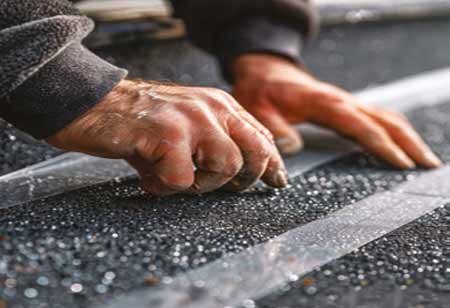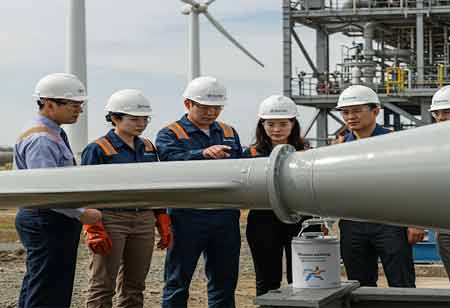Thank you for Subscribing to Construction Business Review Weekly Brief
Specials
- Apartment and Condominium Contractors Canada
- Decking Canada
- Architectural Glass Europe
- MEP APAC
- Construction Saudi Arabia
- German Apartment and Condominium Contractors
- Construction Law APAC
- Outdoor Construction
- Foundation Construction Canada
- MEP Canada
- Kitchen and Bath
- Cold Storage Construction APAC
- Precast Concrete Europe
- Construction Staffing Europe
- Pre-Construction Services
- Flooring System APAC
- Scaffolding Canada
- Swimming Pool Construction Canada
- Construction Management Canada
- Cold Storage Construction Canada
- Flooring Systems Europe
- Residential Construction
- Concrete Canada
- Construction Cladding Europe
- Construction Cladding APAC
- Concretes, Aggregates and Construction Materials APAC
- Concretes, Aggregates and Construction Materials Europe
- Commercial Contractors Europe
- Commercial Contractors APAC
- Dummy
- Construction Insulation, Coating and Waterproofing
- Construction Management APAC
- Landscaping Canada
- Construction Coating Europe
- Construction Tech Startups Europe
- Insulation Services Europe
- Mechanical Contractor Canada
- Mould Remediation and Testing Europe
- Swimming Pool Construction APAC
- Building Sealing Solutions Europe
- Construction Engineering Services
- Mechanical Electrical and Plumbing
- Roofing Systems Europe
- Architectural Glass APAC
- Startups APAC
- Construction Forensic and Owners Representative
- Flooring System
- Waterproofing APAC
- Wall Systems
- Safety and Compliance Europe
- Construction Equipment
- Modular and Prefab Construction
- Architectural Glass
- Construction MENA
- Construction Demolition and Recycling Europe
- Modular Construction Europe
- Construction Interiors
- Steel Building APAC
- HVAC
- Doors and windows
- Modular Construction APAC
- Building Information Modeling APAC
- Sustainable Construction APAC
- Building Restoration and Maintenance
- Commercial Contractors
- Specialty Construction
- Construction Engineering Canada
- Construction Engineering MENA
- Modular Construction Canada
- Construction Demolition Canada
- Roofing and Siding Systems
- Construction Latam
- Construction Staffing
- Roofing Systems APAC
- Construction Consulting
- Steel Building Europe
- Construction Demolition and Recycling APAC
- Safety and Compliance APAC
- Concretes, Aggregates and Construction Materials
- Construction Cladding
The Evolution of Construction Tools and Equipment
The construction industry in Europe has undergone a remarkable evolution, driven by continuous innovation and a focus on efficiency and sustainability.

By
Construction Business Review | Tuesday, January 28, 2025
Stay ahead of the industry with exclusive feature stories on the top companies, expert insights and the latest news delivered straight to your inbox. Subscribe today.
The construction industry in Europe has undergone a remarkable evolution, driven by continuous innovation and a focus on efficiency and sustainability.
FREMONT, CA: The construction industry in Europe has a rich and fascinating history, interwoven with the broader story of human innovation and technological advancement. From rudimentary hand tools forged in early civilisations to cutting-edge machinery of the modern era, the evolution of construction tools and equipment showcases humankind’s ability to innovate and adapt to changing needs.
The 20th century witnessed transformative advancements in construction tools and equipment. Electric-powered tools, such as drills, saws, and grinders, became commonplace, reducing manual effort and increasing precision. Pneumatic tools added further convenience and durability to construction tasks.
This period also saw the advent of earth-moving equipment such as bulldozers, excavators, and cranes. These machines redefined the construction landscape, shifting heavy loads and completing tasks previously considered impossible by human hands alone. Innovations like concrete mixers and welding machines contributed to faster and more durable constructions.
Safety equipment, including helmets, protective eyewear, and reflective clothing, started to gain prominence, signalling a shift toward protecting workers over merely improving tools.
21st Century: High-Tech Solutions and Sustainable Practices
In the 21st century, the construction industry in Europe has embraced technological advancements and sustainability. The development of digital tools, such as CAD software, BIM (Building Information Modeling), and 3D printing, has remodelled project design and execution.
Construction equipment has also become more sophisticated, with autonomous machinery and drones reshaping site management. Smart tools with sensors and AI capabilities can track usage, monitor safety, and even provide predictive maintenance alerts. Equipment powered by renewable energy sources, like electric and hybrid vehicles, reflects the industry’s commitment to reducing its environmental impact.
Additionally, robotic construction systems are beginning to handle bricklaying and material transportation tasks, augmenting human labour and improving project timelines.
Future Trends in European Construction Tools
Further integrating artificial intelligence and machine learning will benefit Europe's construction landscape. Wearable technology, such as augmented reality (AR) glasses, will likely enhance worker efficiency, enabling them to see real-time 3D visualisations on-site. Nanotechnology and advanced materials like graphene may enable the creation of stronger yet lighter tools and equipment.
Circular economy models will also drive innovation. The focus on recycling and reusing construction materials may lead to developing tools specifically designed for deconstruction and material recovery.
The evolution of European construction tools and equipment is a testament to ingenuity and adaptability. From primitive stone tools to advanced AI-driven machinery, each era has built upon the lessons and innovations of the past. The industry continues to evolve, driven by the dual objectives of efficiency and sustainability, ensuring that European construction remains at the forefront of global progress.





